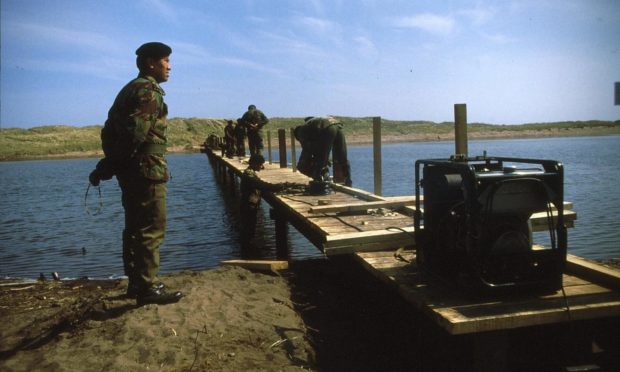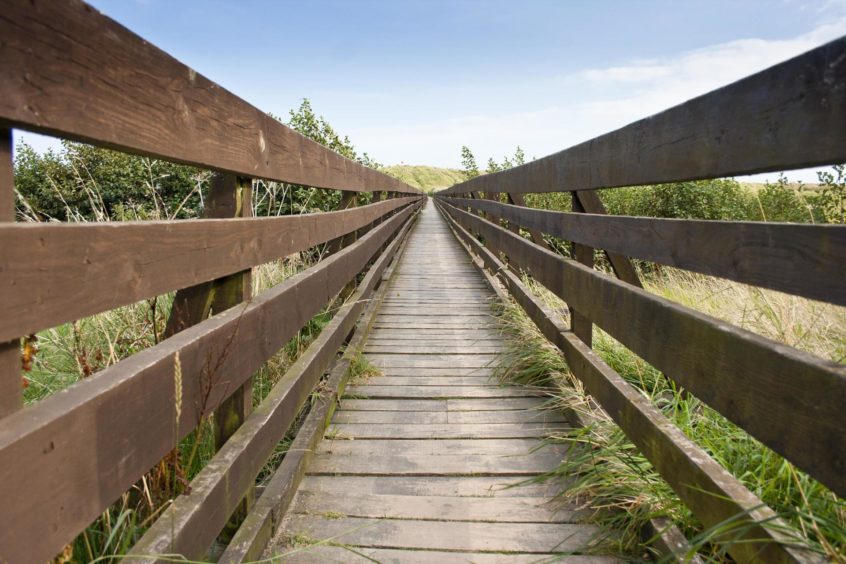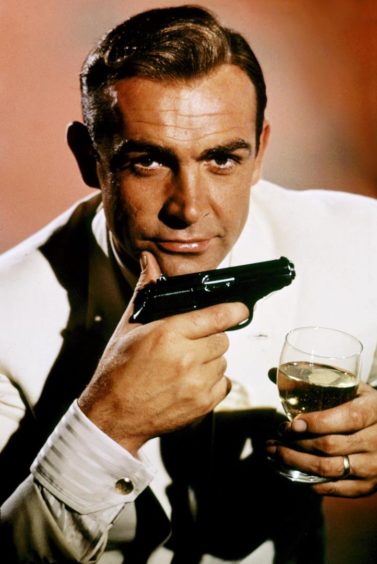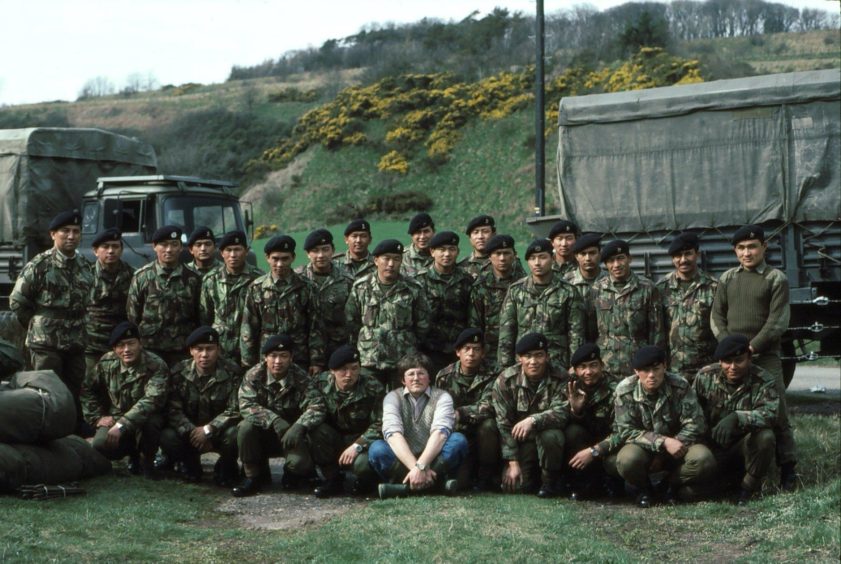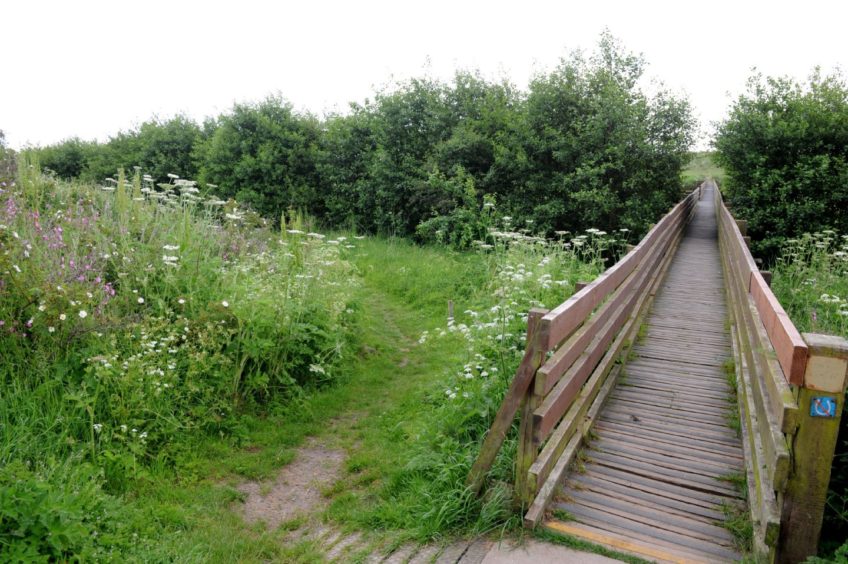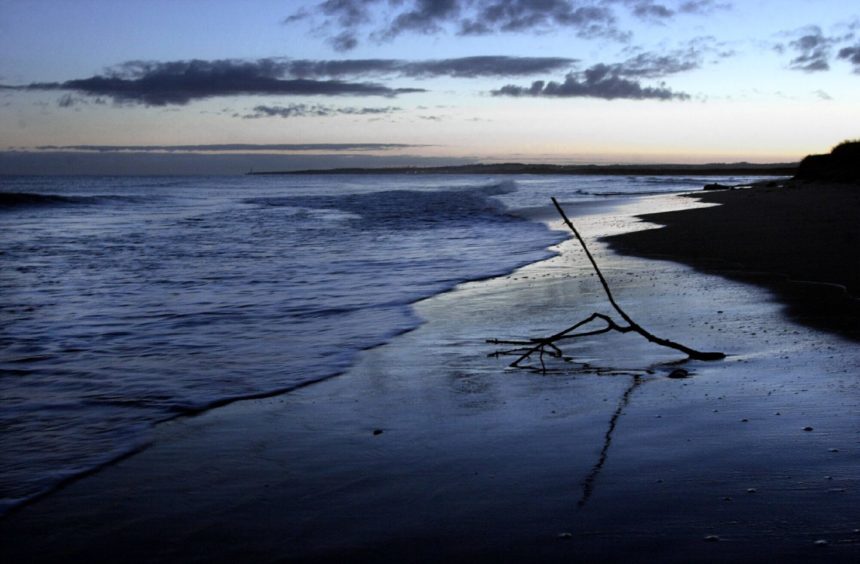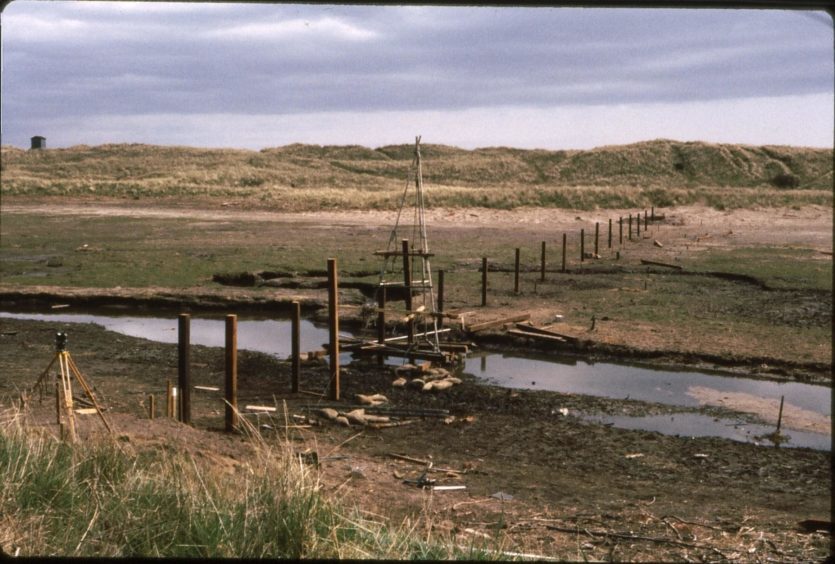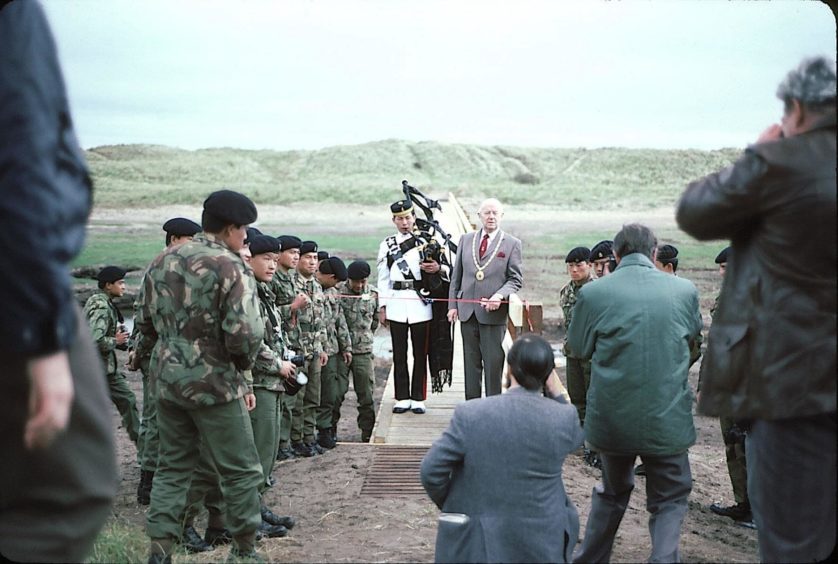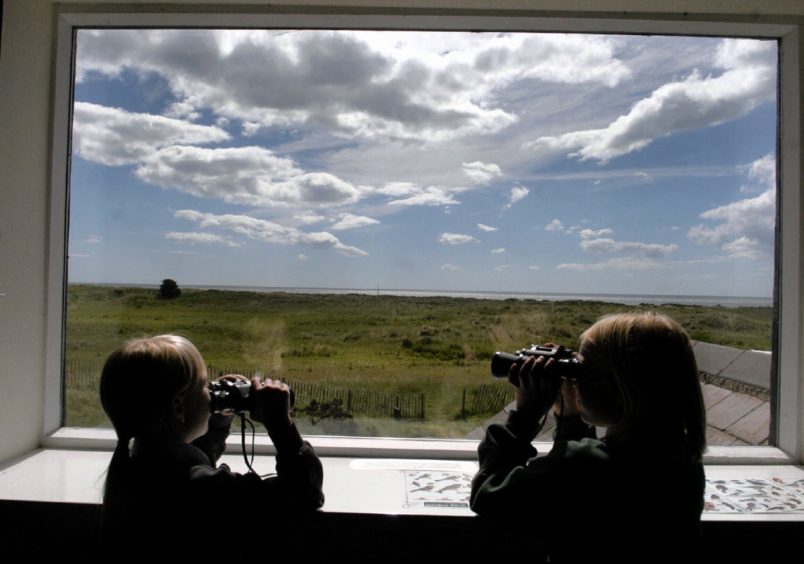Today, St Cyrus National Nature Reserve is an oasis of calm, the sound of the wind soughing through dune grass and wildflower, the lapping of waves on sand, interrupted only by the cries of myriad birds that call it home…
But 35 years ago, this tranquil spot was alive to the sawing of stone, the hammering of nails, the sound of wooden stakes being pile-driven into the ground and the banter and commands of a squadron of Gurkha engineers.
This was 69 Gurkha Field Squadron, hard at work building a wooden bridge across an old salt marsh, creating a vital link between the reserve and the beach. It is a vital structure that has stood the test of time, still in use since it was finished in 1985 – a testament to the tireless engineers who built it.
At the time of its construction, the Gurkhas created quite a stir on the reserve, said Ewen Cameron, who was then the nature reserve warden for the St Cyrus site.
They liked James Bond films
“The atmosphere on the reserve when they were here was fantastic, they were great guys,” he said, adding there were 25 to 30 Gurkhas involved.
“One of the things I liked about them was that they had a TV and video player and they liked to watch videos – and they liked to watch Tom and Jerry cartoons and they liked James Bond film. I used to take them round different videos, but that was always their favourite.”
Ewen was also invited to join them for lunch a couple of times, with the Gurkhas being one of the few elements of the British Army who didn’t live on field rations on deployment, but were always provided with fresh produce to cook with.
“The first time they had some chicken and salad and I thought: ‘Oh, that looks grand’ and took a big mouthful. But when they chopped up the whole chickens, they never took the bones out, so I ended up chewing on bits of bone and goodness knows what else and some pretty hot spicy peppers.
“But they were fantastic guys, and so good-humoured.”
The presence of the Gurkha troop at the St Cyrus National Nature Reserve came about as a happy marriage between the need for a bridge at the reserve and the willingness of the British Army to reach out to help communities, said Ewen, who retired about four years ago.
Dodgy, old, rickety bridge
“Around that time the army had a thing called Opmac, which stood for Operation Military Aid to the Civil Community,” said Ewen, adding its successor scheme Military Aid to the Civil Authorities (MACA) is now helping with the UK’s coronavirus rollout.
“It is good PR for the Army, but also a good training exercise. Over the years, the Nature Conservancy Council had a number of projects at nature reserves done through this Opmac scheme.
“The chief warden for the north-east of Scotland at the time, Dick Balharry – who was one of the most amazing people I have across in my life – had good contacts with the Opmac scheme and that’s how the Gurkhas ended up at St Cyrus.”
Ewen said that much of what is now dry ground was at the time the old salt marsh area at the reserve. It meant a long detour for people who had visited the reserve to get out on to the beach.
He said: “There was a very dodgy, rickety old bridge that the salmon fishermen used to get to their nets when they were based at the Kirkside, which was the Tay Salmon Company’s station for St Cyrus. Members of the public were using it, but it wasn’t safe and the company were getting anxious about it.
“It was decided it would be a good idea to put in a proper, sound footbridge. The district council would pay for it and bought the materials, the Tay Salmon Company provided the site, and we provided the Gurkhas.”
Army are strong on brute force
Ewen said the 69 Gurkha Field Squadron – who have over the years played a role in relief efforts such as rebuilding work after the landslips that hit villages in Nepal – camped on the ground where there is now a visitor centre and office. They also used the old lifeboat station as their mess hall and recreation area.
“When they arrived, we used the lifeboat station to store a big caravan for a seasonal warden to use in the summertime to be on site. I said we needed to get the caravan out, which was big and long and had to be carefully manoeuvred out of there. But the Army – and I don’t mean this in a rude way – are quite strong on brute force. So the lieutenant in charge, a guy called Hari Thapa, told his soldiers and they were straight in, grabbed this caravan and hauled it out, scraping bits off it.”
The Gurkha troop was endlessly inventive when it came to building the bridge, including digging in the big uprights to support the bridge, said Ewen who took the photographs of the work in progress which you see here.
“That was quite hard work and I went down one day and they had improvised a pile driver. They had a stone saw and they cut out big blocks of stone from a rocky outcrop. They suspended these from a rope and pulley and that was their pile driver,” he said.
“If you think about it, nowadays that work would all be done by hydraulic equipment and diesel power. But it was pretty much all built by hand.”
After being hard at work for two or three months, the new structure, which quickly became called the Gurkha Bridge, was officially opened on May 22 1985, by Kincardine and Deeside District Council convener Donald McKenzie.
Led over by a piper
Fittingly, he used a traditional Gurkha blade, the kukri, to cut the ribbon as he declared it open. He was marched across the bridge and back led by a piper.
As a thank you to the Gurkhas, they were given a tour of the north-east, including Balmoral Castle, Glen Muick Nature Reserve and Lochnagar Distillery.
The Gurkha Bridge was an invaluable asset for St Cyrus Nature Reserve … and still is today at a time when, pre-Covid, it was attracting about 150,000 visitors a year to this oasis of precious wildlife and natural beauty, operated under the auspices of NatureScot, Scotland’s nature agency.
Therese Alampo, the St Cyrus nature reserve manager today, said: “The bridge is the main access to the beach. It’s not just to get people across this soggy area, it really does protect the rest of the reserve from people just splaying out.”
Showing signs of age now
But now the Gurkha Bridge is in need of some attention, with the passage of time taking its toll and while still safe needs work. While the pilings which the Gurkhas so expertly and firmly placed are still as sound as ever, the soft wood aspects of the bridge are wearing.
“The bridge is showing real signs of its age now,” said Therese. “It would be wonderful to get the Gurkhas back as we have had an inspection done and we do need to future proof and we do need a new bridge, which will be very costly. The area does still flood from time to time and it’s still wet. But we need it to protect the reserve.”
Therese said exactly how the bridge will be reworked and paid is in the very early stages.
“But if there is anybody reading this who has a similar scheme for people to do it for us, like the Gurkhas, that would be wonderful. We do have a tradition of people helping us out.”
